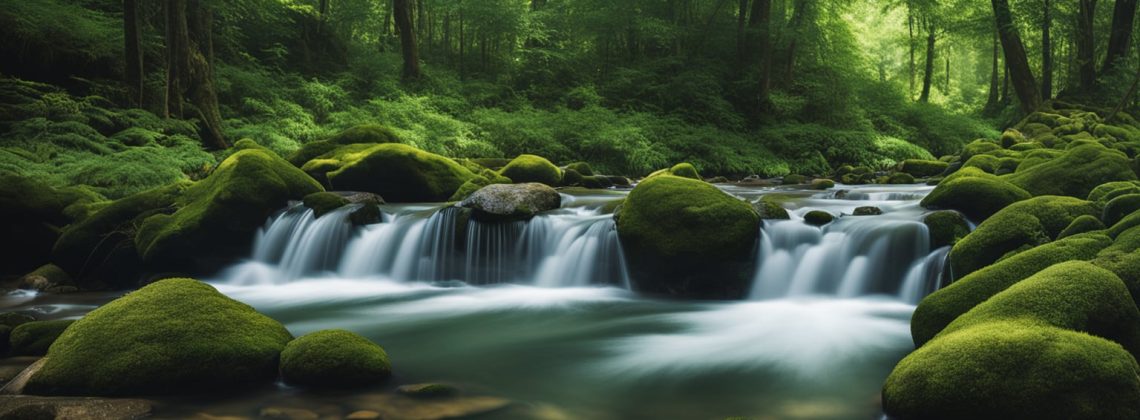
Techniques and Equipment for Safe Drinking Water
When you’re out in the wild, finding safe drinking water can be a challenge. Natural water sources can be contaminated with harmful bacteria, viruses, parasites, and chemicals. Drinking contaminated water can lead to serious health problems, so it’s essential to know how to purify water in the wild. With the right knowledge and equipment, you can turn even the dirtiest water into safe, drinkable water.
Understanding water contamination is the first step in water purification. Water can be contaminated with a variety of substances, including bacteria, viruses, parasites, and chemicals. The most common sources of contamination are animal waste, human waste, and industrial pollution. Contaminated water can cause a range of health problems, from mild stomach upset to serious illnesses like cholera and typhoid fever.
Luckily, there are many water purification techniques you can use in the wild. From boiling and filtering to chemical treatments and natural purification methods, there are options for every situation. With the right knowledge and preparation, you can stay hydrated and healthy no matter where your adventures take you.
Key Takeaways
- Understanding water contamination is essential for safe water purification.
- There are many water purification techniques available, including boiling, filtering, and chemical treatments.
- With the right knowledge and preparation, you can stay hydrated and healthy in the wild.
Understanding Water Contamination
When it comes to water purification in the wild, the first step is understanding water contamination. Natural water sources can be contaminated with harmful bacteria, viruses, parasites, and chemicals. Here are the types of waterborne pathogens, chemical pollutants, and sediments and turbidity that you should be aware of:
Types of Waterborne Pathogens
Waterborne pathogens are microorganisms that can cause illness or disease. They are found in untreated water sources such as rivers, lakes, and streams. Some common types of waterborne pathogens include:
- Bacteria: Examples include E. coli, Salmonella, and Campylobacter.
- Viruses: Examples include norovirus, rotavirus, and hepatitis A.
- Parasites: Examples include Giardia, Cryptosporidium, and Entamoeba histolytica.
Chemical Pollutants
Chemical pollutants can come from natural sources such as minerals or human-made sources such as agricultural runoff or industrial waste. They can cause a range of health problems depending on the type and level of exposure. Some common types of chemical pollutants include:
- Heavy metals: Examples include lead, mercury, and arsenic.
- Pesticides: Examples include atrazine, glyphosate, and chlorpyrifos.
- Industrial chemicals: Examples include PCBs, dioxins, and furans.
Sediments and Turbidity
Sediments and turbidity refer to the amount of particles and debris in the water. They can affect water quality by making it cloudy, discolored, or taste bad. Some common types of sediments and turbidity include:
- Soil erosion: Caused by natural events such as rain or wind.
- Algae blooms: Caused by excess nutrients in the water such as nitrogen and phosphorus.
- Construction runoff: Caused by building sites or road construction.
Understanding the types of water contamination is essential for water purification in the wild. Knowing what to look for and how to treat it can help keep you safe and healthy.
Water Purification Techniques
When it comes to purifying water in the wild, there are several techniques you can use to ensure that the water you drink is safe. Here are some of the most effective water purification techniques:
Boiling
Boiling is one of the most effective ways to purify water in the wild. The heat kills most of the bacteria, viruses, and parasites that can be present in the water. To boil water, simply heat it until it reaches a rolling boil for at least five minutes. Boiling water is an excellent way to purify it, but it does require a heat source and time, so it may not be the most practical option in all situations.
Chemical Treatments
Chemical treatments are another effective way to purify water in the wild. Chlorine dioxide tablets, iodine tablets, and other chemical treatments can be used to kill bacteria, viruses, and parasites in the water. These treatments are easy to use and can be carried in your backpack or survival kit. However, they can leave a chemical taste in the water, and they may not be effective against all types of contaminants.
Solar Disinfection
Solar disinfection, also known as SODIS, is a method of purifying water using sunlight. To use this method, fill a clear plastic or glass bottle with water and leave it in the sun for at least six hours. The UV rays from the sun will kill most of the bacteria, viruses, and parasites in the water. This method is effective, but it requires a clear, sunny day and may not be practical in all situations.
Filtration Systems
Filtration systems are another effective way to purify water in the wild. These systems use a variety of filters to remove contaminants from the water. Some filtration systems use activated carbon to remove impurities, while others use ceramic filters or reverse osmosis membranes. Filtration systems are effective, but they can be bulky and require a power source or manual effort to operate.
In conclusion, there are several effective water purification techniques you can use in the wild. Boiling, chemical treatments, solar disinfection, and filtration systems are all effective ways to purify water and make it safe to drink. Choose the method that works best for your situation and always prioritize your safety when drinking water from natural sources.
Natural Water Purification Methods
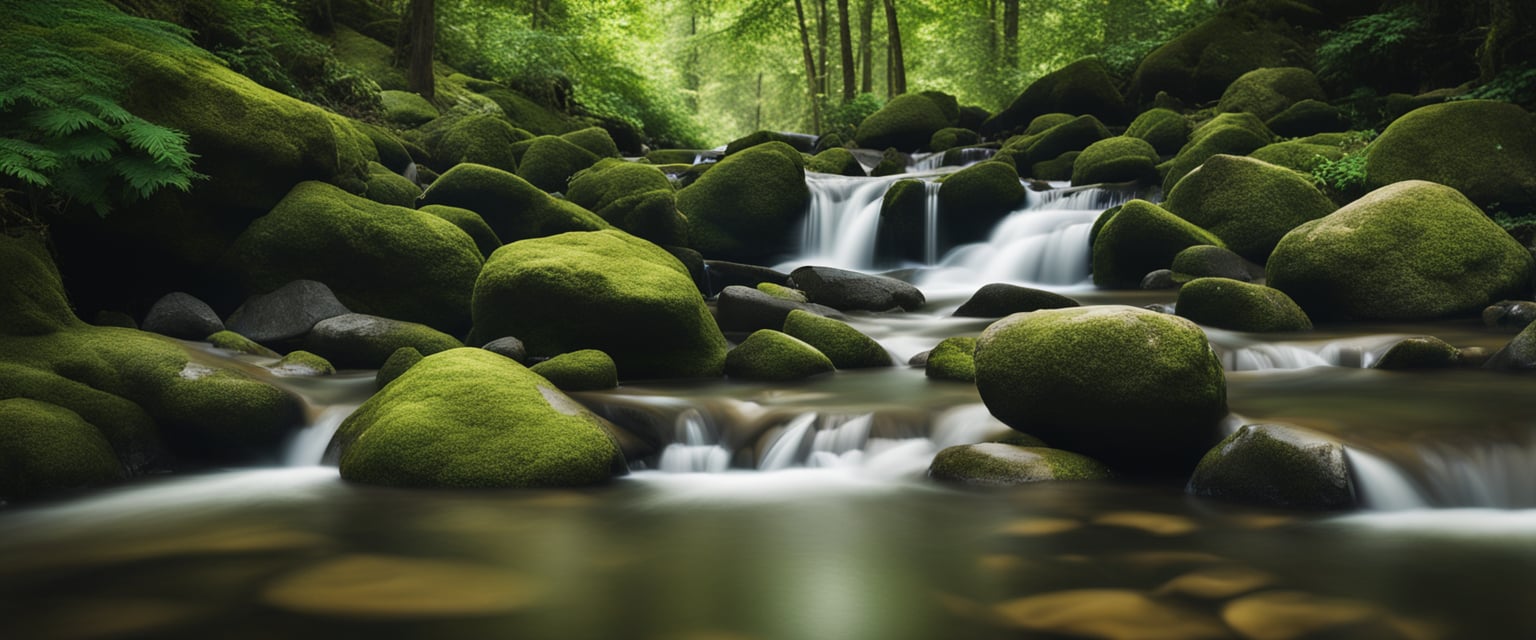
When you are out in the wild, finding a clean water source can be a challenge. Fortunately, there are natural water purification methods that you can use to make water safe for drinking. In this section, we will discuss three natural water purification methods that you can use to purify water in the wild.
Sand and Charcoal Filtration
One of the simplest ways to purify water in the wild is through sand and charcoal filtration. This method involves passing water through a layer of sand and charcoal to remove impurities. The sand acts as a physical filter, while the charcoal absorbs chemicals and toxins.
To use this method, you will need to create a filter. Start by digging a hole in the ground and lining it with a layer of rocks. Next, add a layer of sand, followed by a layer of charcoal. Repeat this process until you have a deep enough filter. Finally, pour water through the filter and collect it in a container.
Plant-Based Filtration
Another natural water purification method is plant-based filtration. This method involves using plants to filter water and remove impurities. Some plants that are commonly used for water filtration include cattails, reeds, and bamboo.
To use this method, you will need to create a filter using plant materials. Start by cutting a hollow stem or branch from a plant. Next, pack the hollow stem or branch with plant materials, such as grass or leaves. Finally, pour water through the filter and collect it in a container.
Solar Still Technique
The solar still technique is a natural water purification method that uses the sun’s energy to purify water. This method involves using a still to collect and purify water through the process of evaporation and condensation. To use this method, you will need a container, a clear plastic sheet, and a rock.
Start by digging a hole in the ground and placing the container in the hole. Next, add some vegetation or dirty water to the container. Cover the container with the clear plastic sheet and place a rock in the center of the sheet. Finally, wait for the sun to heat the water and cause it to evaporate. The water vapor will condense on the plastic sheet and drip into the container, providing you with clean drinking water.
Selecting a Water Source
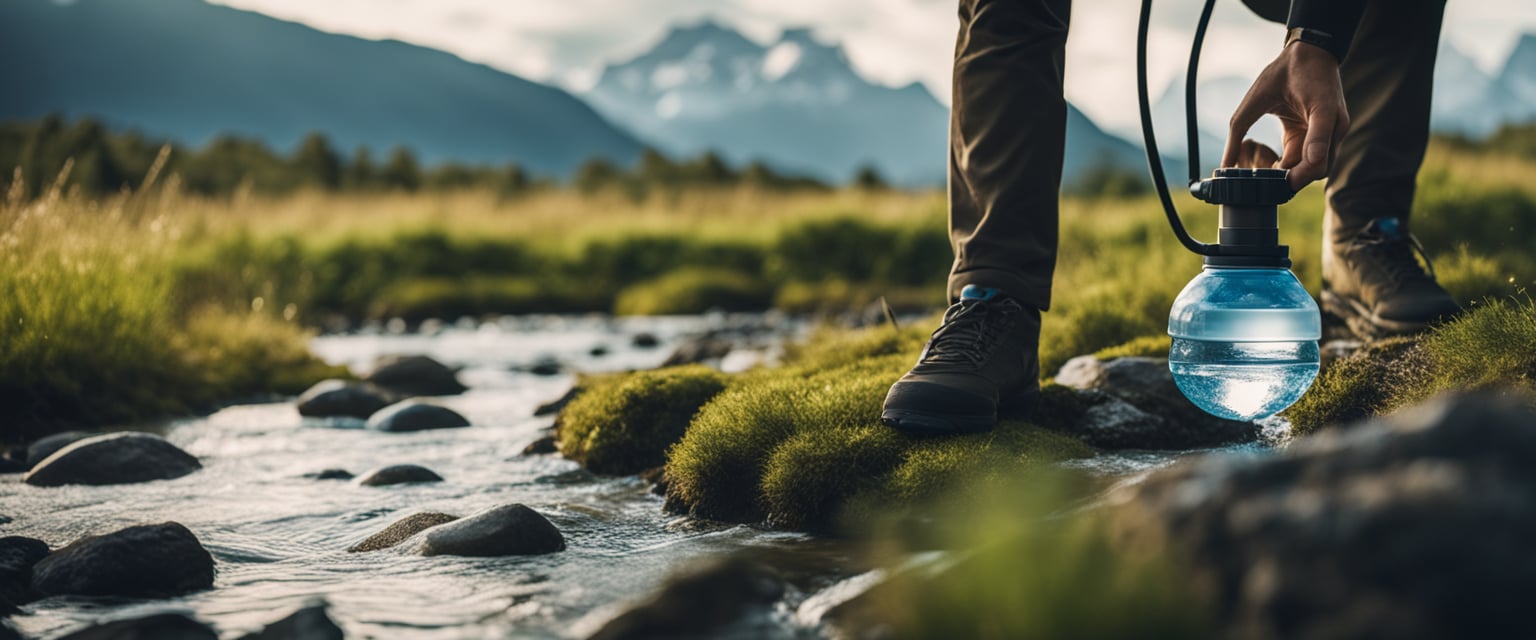
When it comes to water purification in the wild, selecting a safe water source is the first and most important step. Here are some tips to help you identify a safe natural water source:
Identifying Safe Natural Sources
Natural sources of water, such as streams, rivers, and lakes, can be a great source of hydration in the wild. However, not all water sources are safe to drink from. Avoid water sources that may be polluted or heavily contaminated with sediments and debris. Here are some things to look for when identifying a safe water source:
- Look for clear, flowing water. Water that is stagnant or still may contain harmful bacteria and parasites.
- Avoid water sources that are downstream from human activity, such as farms, factories, or sewage treatment plants.
- Look for signs of animal activity around the water source. If there are no signs of animals, it may indicate that the water is not safe to drink.
Assessing Water Clarity and Odor
Once you have identified a potential water source, it is important to assess its clarity and odor. Water that is cloudy or has a strong odor may be contaminated and should be avoided. Here are some tips for assessing water clarity and odor:
- Use a container, such as a water bottle or canteen, to collect a sample of the water.
- Hold the container up to the light to assess the water’s clarity. If the water is cloudy or has visible particles, it may be contaminated.
- Smell the water to assess its odor. If the water has a strong odor, it may be contaminated and should be avoided.
By following these tips, you can identify a safe natural water source and take the first step towards purifying water in the wild.
Practical Tips for Staying Hydrated
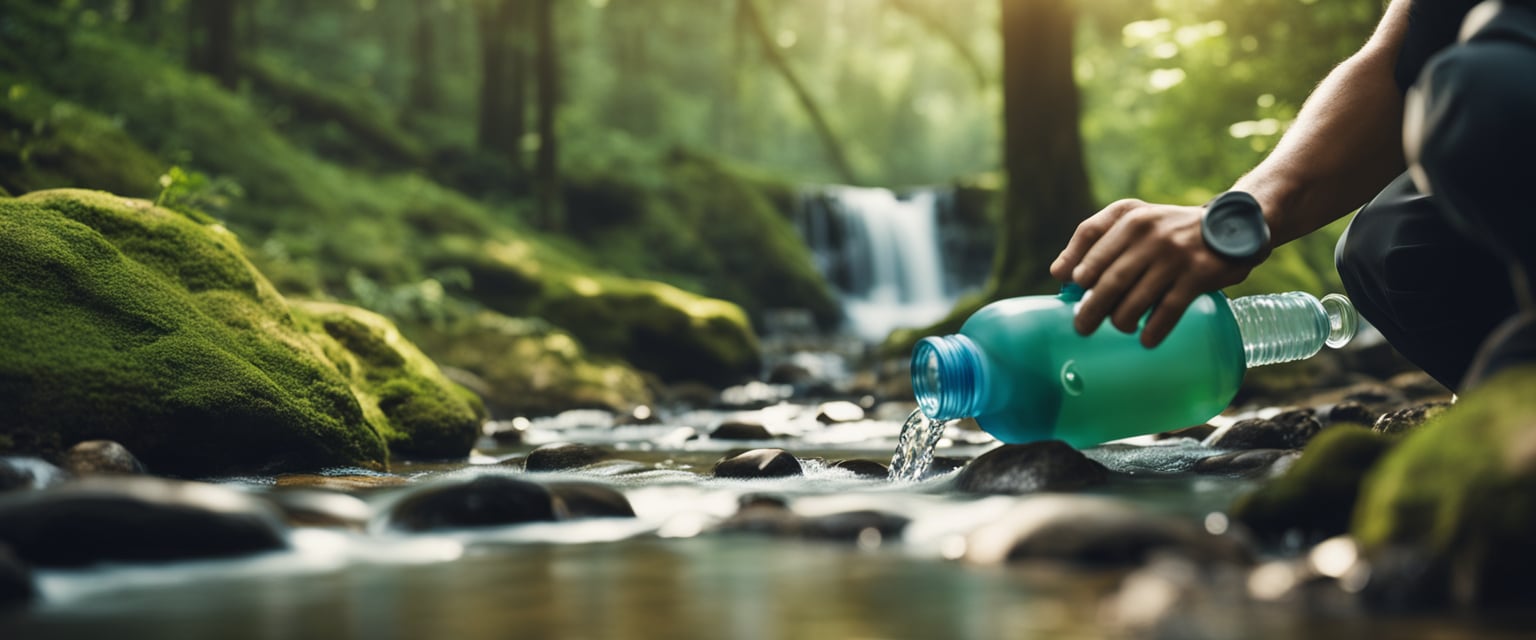
Planning and Preparation
When it comes to staying hydrated in the wild, planning and preparation are key. Before embarking on your adventure, research the area you will be in and identify potential water sources. It’s important to know where you can find water and how to purify it before you need it.
Consider bringing a water filter or purification tablets with you to ensure that you have access to safe drinking water. Additionally, bring enough water bottles or hydration bladders to hold your purified water.
Carrying and Storing Purified Water
Once you have purified your water, it’s crucial to store it properly to prevent contamination. Store your water in clean, airtight containers to prevent bacteria and other contaminants from entering.
Be sure to label your containers with the date and time of purification, as well as the type of purification method used. This will help you keep track of how long the water has been stored and when it needs to be purified again.
Consider using a hydration bladder for easy access to your water while on the go. However, be sure to clean and dry your hydration bladder thoroughly after each use to prevent mold and bacteria growth.
Remember to drink water regularly throughout the day, even if you don’t feel thirsty. Dehydration can sneak up on you quickly in the wild, and it’s important to stay ahead of it.
By planning ahead, purifying your water properly, and storing it correctly, you can stay hydrated and healthy on your next wilderness adventure.
Frequently Asked Questions
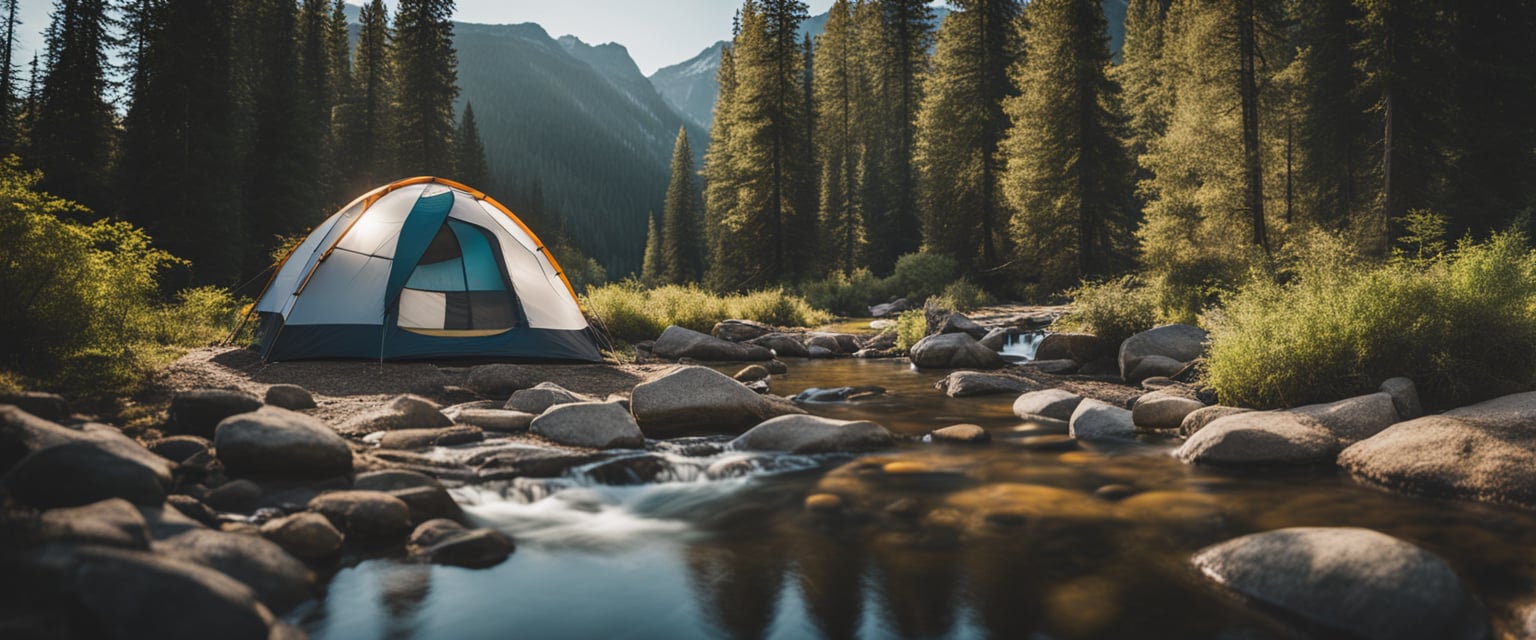
What are the top methods for purifying water in the wilderness?
When it comes to purifying water in the wilderness, there are several methods that you can use. Some of the most popular methods include boiling, chemical treatment, filtration, and UV treatment. Each method has its own benefits and drawbacks, so it’s important to choose the one that is best suited for your situation.
How can you filter water using natural materials like rocks and sand?
Filtering water using natural materials like rocks and sand is a simple and effective method for purifying water in the wilderness. To do this, you will need to create a filter using layers of sand, gravel, and charcoal. The sand and gravel will help to remove larger particles, while the charcoal will help to remove impurities and odors.
What are the benefits and drawbacks of using iodine for water purification in the wild?
Iodine is a popular chemical treatment for purifying water in the wilderness. One of the benefits of using iodine is that it is lightweight and easy to carry. However, iodine can leave an unpleasant taste in the water and can also be harmful if ingested in large amounts. It’s important to follow the instructions carefully when using iodine for water purification.
How can water be purified without boiling it when outdoors?
If you don’t have access to a heat source for boiling water, there are several other methods that you can use to purify water in the wilderness. Some of these methods include chemical treatment, filtration, UV treatment, and using a solar still. Each method has its own benefits and drawbacks, so it’s important to choose the one that is best suited for your situation.
What are the safest water purification tablets for outdoor use?
There are several types of water purification tablets available for outdoor use. Some of the most popular brands include Aquatabs, Potable Aqua, and Katadyn Micropur. It’s important to read the instructions carefully and follow the recommended dosage when using water purification tablets.
In a survival situation, how can one ensure their water is safe to drink?
In a survival situation, it’s important to take steps to ensure that your water is safe to drink. This may include boiling the water, using chemical treatment, or using a filtration system. It’s also important to be aware of potential sources of contamination and to take steps to avoid them.

Leave a Reply